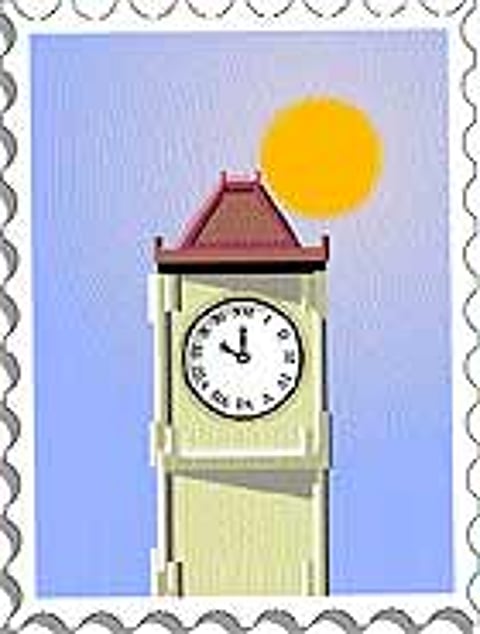Potter’s Wheel
Oxford Diary
There are lots of gawkers in Oxford these days—Harry Potter fans who come to see some of the famous locations used in the movies....

There are lots of gawkers in Oxford these days—Harry Potter fans who come to see some of the famous locations used in the movies. The Hogwarts Library, for example, is actually the Duke Humphrey’s Library, with its eighty miles of books. The Hogwarts infirmary, where Harry and Ron are seen recovering from magical misadventures, is part of the Bodleian Library. And the place where Harry turns Malfoy into a ferret in The Goblet of Fire, is actually the cloisters of the New College.
But the most famous location of all is perhaps the magnificent 16th century Christ Church College dining hall, which was used as the Hogwarts Dining Hall. You’ll recognise it immediately—though some features you see in the movies, like the magical transmorphic ceiling, were courtesy the computer animation boffins. Luminaries who have dined at these long tables in real life include W.H. Auden, Albert Einstein, Lewis Carroll, Sir Christopher Wren, Zulfi Bhutto, and no less than thirteen British prime ministers (more than all of the prime ministers produced by Cambridge University, as a wag once pointed out).
Venerable though Christ Church may be, it’s not the oldest of Oxford’s colleges. So which is the oldest? It’s a matter of some debate: University College was the first to get a bequest, in 1249; Balliol was the first to acquire a site, in 1263; Merton was the first to get a statute, in 1264. The so-called New College actually dates back to 1374; the newest college is St Peter’s, founded in 1929. Balliol, built on land granted by John de Balliol, a notorious robber baron of the time, developed one of the most cosmopolitan cultures in Oxford. It was the first to admit Indian students in the 19th century and went on to become the de facto starting-point for careers in the ics.
Netherworld Escapades
While the connection of Oxford to the Harry Potter series has been well-publicised, not many people realise the even deeper Oxford connection to that other fantastical animated series, Lord of the Rings. J.R.R. Tolkien, its author, was a Professor of Anglo-Saxon at Oxford from 1925 onwards—from all accounts a dry, crusty academic, who would have probably been very uncomfortable with the razzle-dazzle entertainment phenomenon he was to unleash on the world. When his children were small, Tolkien decided one day to write a story for them, based loosely on the Anglo-Saxon mythology he was researching. Sitting in his shabby donnish study, he was wondering where to begin when his eye suddenly fell on a frayed hole in the carpet. And thus we got one of the most memorable opening lines in contemporary English literature, “In a hole in the ground lived a hobbit....”
The house in which Tolkien wrote The Hobbit and Lord of the Rings is still there, and so is the Eagle and Child pub, where he used to meet up with buddies like C.S. Lewis, another Oxford don and medieval scholar, who—could this be a coincidence?—later wrote The Chronicles of Narnia.
Triangle Tangle
One of the many interesting Indians who studied at Oxford over the years was Ved Mehta, the famous blind author of Fly and the Fly-Bottle, Delinquent Chacha and Daddyji, and for many years a mainstay of the New Yorker. Mehta was involved in a poignant academic love triangle in Oxford in the late ’50s: he fell in love with a charming young Indian woman student, but she gently turned him down, explaining that she was interested in someone else. And that someone else was no other than Amartya Sen, who was at that time blazing a legend for himself at Cambridge. But it’s funny how life turns out: the lady in question ultimately didn’t marry, and now lives in retirement in India. She is still so charming that one can understand why everybody should have been in love with her.
Eyes Wide Shut
To compensate for his blindness, Ved Mehta developed a kind of extra-sensory skill to deal with the world (an ability sometimes called ‘facial vision’). This, along with his vivid descriptions, made some people refuse to believe that he could be blind. The story goes that at a party one such disbeliever cornered Mehta alone, in an empty room, and to test whether he was really blind or not, began to make faces at him. Getting no reaction from Mehta, the man was finally convinced, and went his way. But then five minutes later the host came up to him and asked, “By the way, why were you making faces at Ved Mehta?”
But there’s another wry version of this story: the man, refusing to believe that Ved Mehta is blind, corners him alone, in an empty room, and begins to make faces at him. Getting no reaction, the man is convinced of his blindness, and goes his way. But five minutes later the host comes up to him and asks, “By the way, why were you making faces at V.S. Naipaul?” Nice stories, but both, alas, apocryphal.